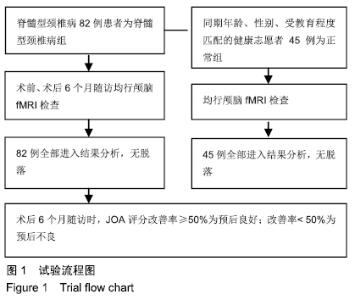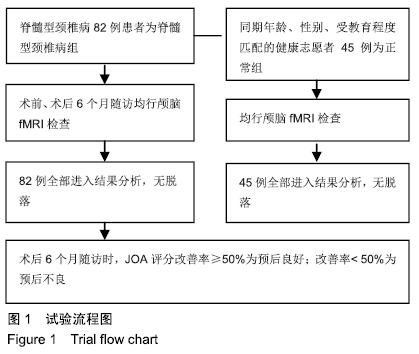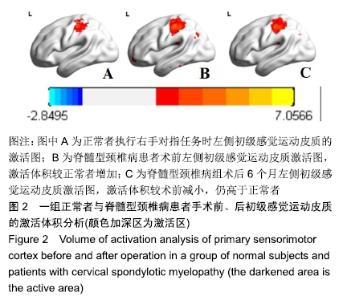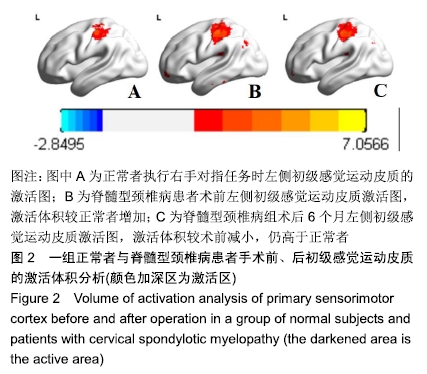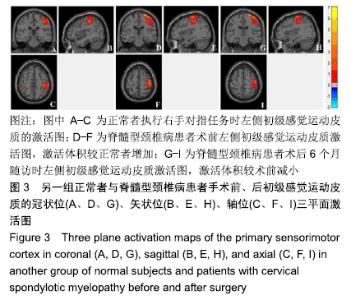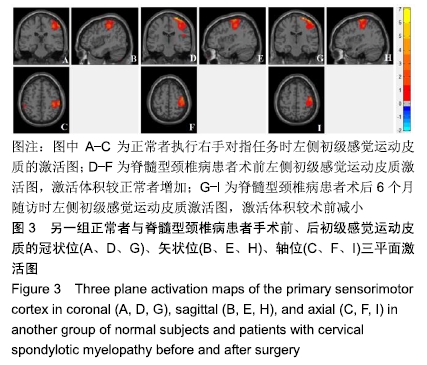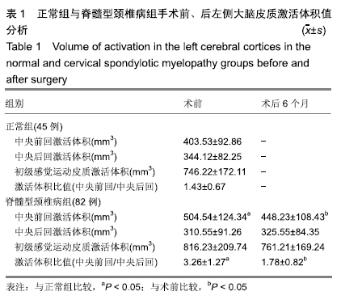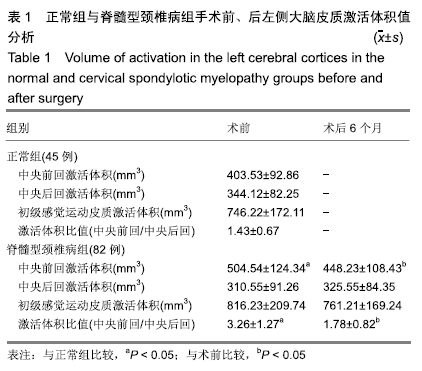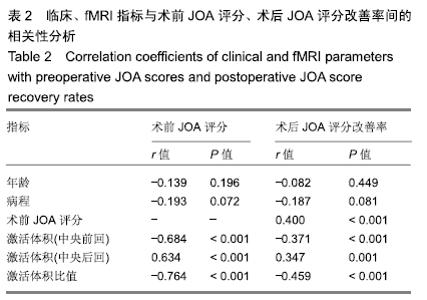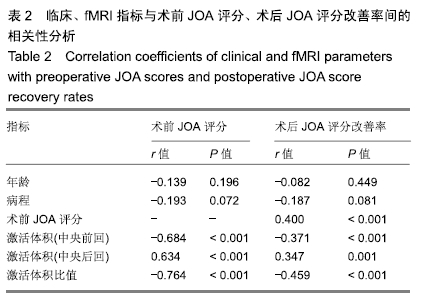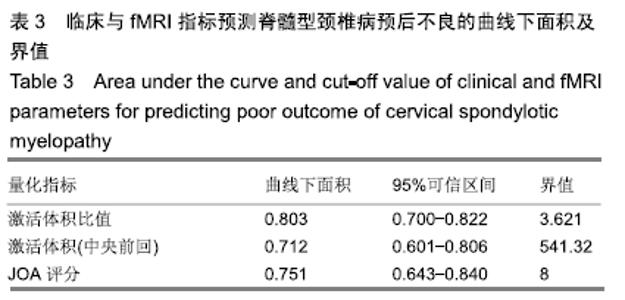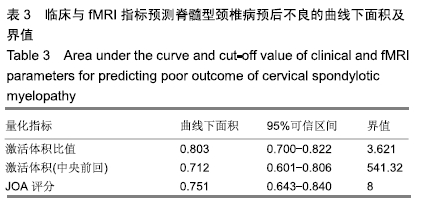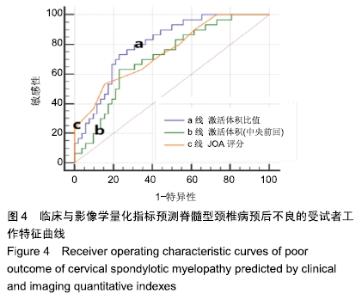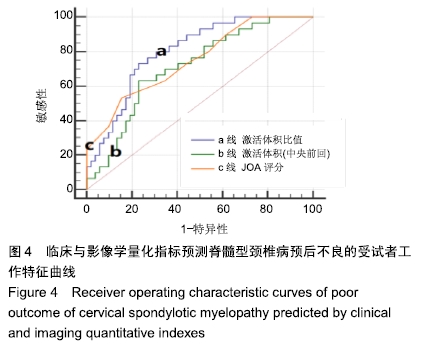[1] NICHOLSON KJ, MILLHOUSE PW, PFLUG E, et al. Cervical Sagittal Range of Motion as a Predictor of Symptom Severity in Cervical Spondylotic Myelopathy. Spine (Phila Pa 1976). 2018;43(13):883-889.
[2] YING J, ZHOU X, ZHU M, et al. The Contribution of Diffusion Tensor Imaging to Quantitative Assessment on Multilevel Cervical Spondylotic Myelopathy. Eur Neurol. 2016;75(1-2): 67-74.
[3] BABA H, MAEZAWA Y, UCHIDA K, et al. Plasticity of the spinal cord contributes to neurological improvement after treatment by cervical decompression. A magnetic resonance imaging study. J Neurol. 1997;244(7):455-460.
[4] HAINS BC, BLACK JA, WAXMAN SG. Primary cortical motor neurons undergo apoptosis after axotomizing spinal cord injury. J Comp Neurol. 2003;462(3):328-341.
[5] HRABÁLEK L, HLUŠTÍK P, HOK P, et al. Effects of spinal cord decompression in patients with cervical spondylotic myelopathy oncortical brain activations. Rozhl Chir. 2014; 93(11):530-535.
[6] HOLLY LT, DONG Y, ALBISTEGUI-DUBOIS R, et al. Cortical reorganization in patients with cervical spondylotic myelopathy. J Neurosurg Spine. 2007;6(6):544-551.
[7] DUGGAL N, RABIN D, BARTHA R, et al. Brain reorganization in patients with spinal cord compression evaluated using fMRI. Neurology. 2010;74(13):1048-1054.
[8] BHAGAVATULA ID, SHUKLA D, SADASHIVA N, et al. Functional cortical reorganization in cases of cervical spondylotic myelopathy and changes associated with surgery. Neurosurg Focus. 2016;40(6):E2.
[9] RYAN K, GONCALVES S, BARTHA R, et al. Motor network recovery in patients with chronic spinal cord compression: a longitudinal study following decompression surgery. J Neurosurg Spine. 2018;28(4):379-388.
[10] SUMMERS PE, FERRARO D, DUZZI D, et al. A quantitative comparison of BOLD fMRI responses to noxious and innocuous stimuli in the human spinal cord. Neuroimage. 2010;50(4):1408-1415.
[11] CABALLERO-GAUDES C, REYNOLDS RC. Methods for cleaning the BOLD fMRI signal. Neuroimage. 2017;154: 128-149.
[12] ZHANG JT, MENG FT, WANG S, et al. Predictors of surgical outcome in cervical spondylotic myelopathy: focusing on the quantitative signal intensity. Eur Spine J. 2015;24(12): 2941-2945.
[13] GU Y, SHI J, CAO P, et al. Clinical and Imaging Predictors of Surgical Outcome in Multilevel Cervical Ossification of Posterior Longitudinal Ligament: An Analysis of 184 Patients. PLoS One. 2015;10(9):e0136042.
[14] PANDITA N, GUPTA S, RAINA P, et al. Neurological Recovery Pattern in Cervical Spondylotic Myelopathy after Anterior Surgery: A Prospective Study with Literature Review. Asian Spine J. 2019;13(3):423-431.
[15] KOKOTILO KJ, ENG JJ, CURT A. Reorganization and preservation of motor control of the brain in spinal cord injury: a systematic review. J Neurotrauma. 2009;26(11):2113-2126.
[16] KRIZ J, KOZAK J, ZEDKA M. Primary motor cortex inhibition in spinal cord injuries. Neuro Endocrinol Lett. 2012;33(4): 431-441.
[17] GALLO A, ESPOSITO F, SACCO R, et al. Visual resting-state network in relapsing-remitting MS with and without previous optic neuritis. Neurology. 2012;79(14):1458-1465.
[18] FREUND P, WEISKOPF N, WARD NS, et al. Disability, atrophy and cortical reorganization following spinal cord injury. Brain. 2011;134(Pt 6):1610-1622.
[19] ASKIM T, INDREDAVIK B, VANGBERG T, et al. Motor network changes associated with successful motor skill relearning after acute ischemic stroke: a longitudinal functional magnetic resonance imaging study. Neurorehabil Neural Repair. 2009;23(3):295-304.
[20] KOWALCZYK I, DUGGAL N, BARTHA R. Proton magnetic resonance spectroscopy of the motor cortex in cervical myelopathy. Brain. 2012;135(Pt 2):461-468.
[21] NOURI A, TETREAULT L, ZAMORANO JJ, et al. Role of magnetic resonance imaging in predicting surgical outcome in patients with cervical spondylotic myelopathy. Spine (Phila Pa 1976). 2015;40(3):171-178.
[22] TETREAULT LA, KOPJAR B, VACCARO A, et al. A clinical prediction model to determine outcomes in patients with cervical spondylotic myelopathy undergoing surgical treatment: data from the prospective, multi-center AOSpine North America study. J Bone Joint Surg Am. 2013;95(18): 1659-1666.
|
